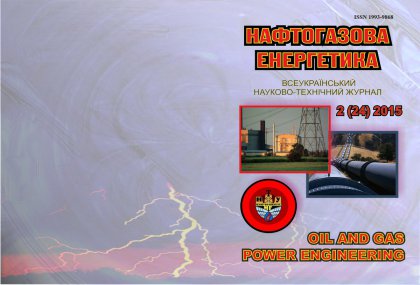EXPERIMENTAL STUDY OF WATER-GAS EJECTOR IN PROCESS OF CARBON DIOXIDE INJECTING
Keywords:
oil well, ejector, annular space, carbon dioxide, water-gas ejector laboratory unit.Abstract
In recent years, it was suggested to use jet devices (ejectors) in oil wells, operated with the help of the sucker rod pumps, when they are installed above the dynamic head of the well. These ejectors will absorb gas from the annulus that will facilitate extraction of the well’s production.In order to test the possibility of ejectors usage when operating oil wells with the help of the sucker rod pumps, a water-gas ejector laboratory unit was developed. Carbon dioxide that dissolves in water just as well as petroleum gas dissolves in oil was selected for the injection flow. Carbon dioxide is fed into the ejector from the gas cylinder. During the experimental study we changed the pressure of the injected carbon dioxide at the inlet of the
ejector, the pressure at the outlet of the ejector. Experiments were performed with replaceable nozzles and mixing chambers. The obtained results were compared with the results of the previously conducted studies on the same unit
under the conditions of injection of air fed by the compressor. A significant difference in the dimensionless characteristics of ejectors was established when injecting air and carbon dioxide. In the case of oil-and-gas ejector, when the injected gas is petroleum gas from the well annulus, at the ejector outlet, we will always have water-oil mixture and gas, which consists of free petroleum gas before the ejector and injected petroleum gas. In addition, after the ejector outlet, the gas dissolved in oil will escape from it.
Downloads
References
2. Атнабаев З.М. Скважинные эжекторы для предотвращения повышения затрубного давления и срыва подачи УЭЦН / З.М. Атнабаев // Нефтяное хозяйство. – 2001. – №4. – С. 72-74.
3. Пат. 105135 України, МПК F04B 47/02. Свердловинний ежектор / О.В. Паневник, О.Я. Дубей, І.Я. Яремко, М.М. Лях – № а 2013 07030; заявл. 04.06.13; опубл. 10.04.14 Бюл. №7.
4. Паневник О.В. Визначення розподілу тиску, температури та швидкості руху газорідинної суміші вздовж стовбура нафтової свердловини у випадку експлуатації штанговим свердловинним насосом / О.В. Паневник, О.Я. Дубей // Науковий вісник ІФНТУНГ. – Івано-Франківськ, 2014. – №1 (36). – С. 53-60.
5. Дубей О.Я. Дослідження водоповітряного ежектора при зміні його геометрії та робочих параметрів / О.Я. Дубей // Научные труды SWorld. – Иваново: Научный мир, 2015. – №2 (39). Том 6 – С. 33-42.
6. Соколов Е.Я. Струйные аппараты [Текст] / Е.Я. Соколов, Н.М. Зингер. – М.: Энергоатомиздат, 1989. – 352 с.
7. Намиот А.Ю. Растворимость газов в воде [Текст] / А.Ю. Намиот. – М.: Недра, 1991. – 167 с.
8. Бурдынь Т.А. Химия нефти, газа и пластовых вод [Текст] / Т.А. Бурдынь, Ю.Б. Закс. – М.: Недра, 1975. – 216 с.


.png)






1.png)









